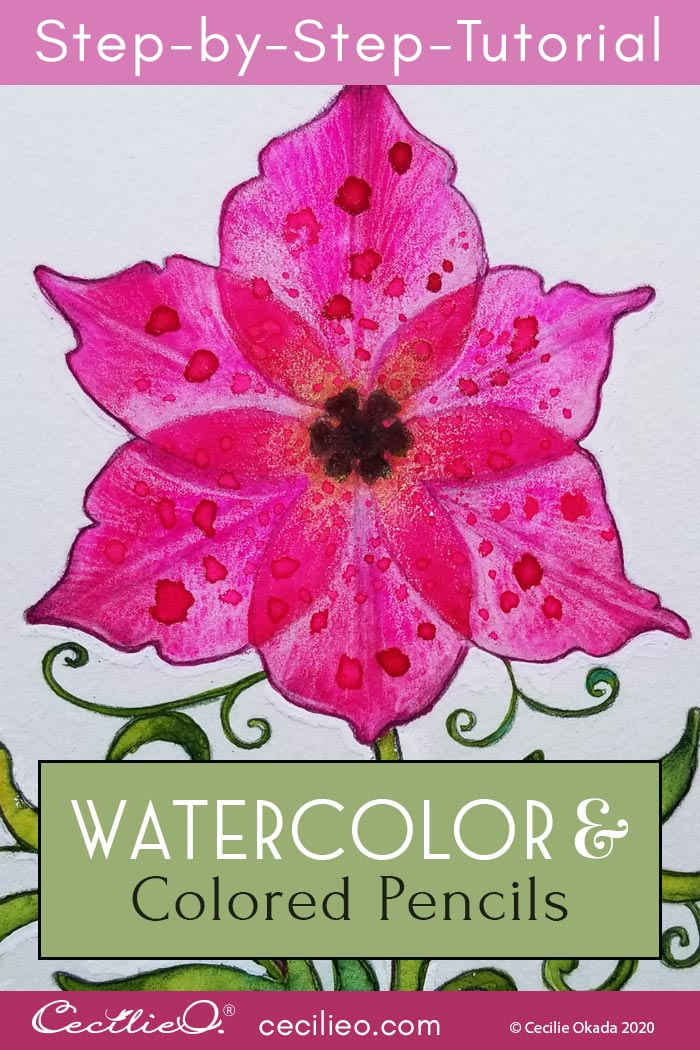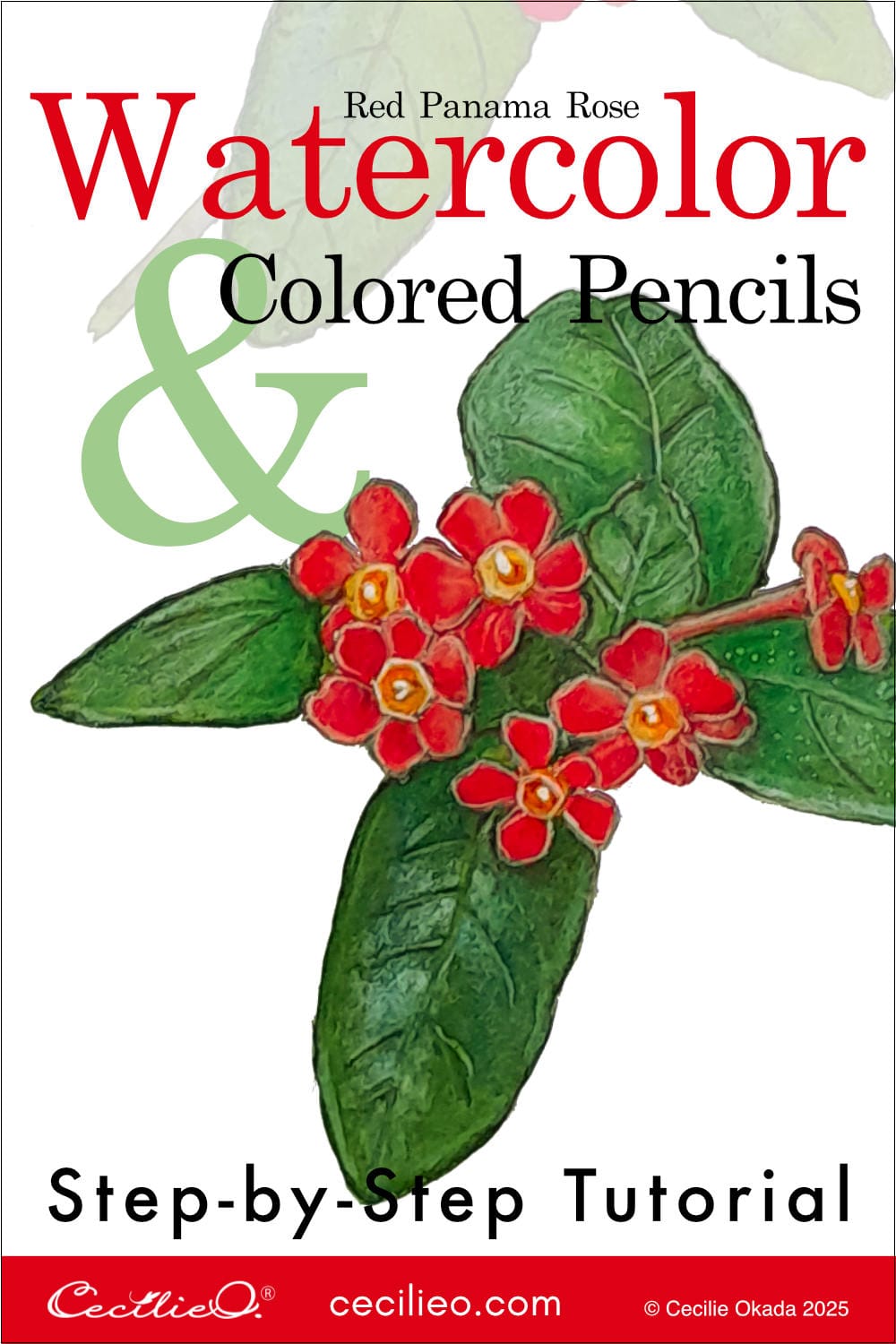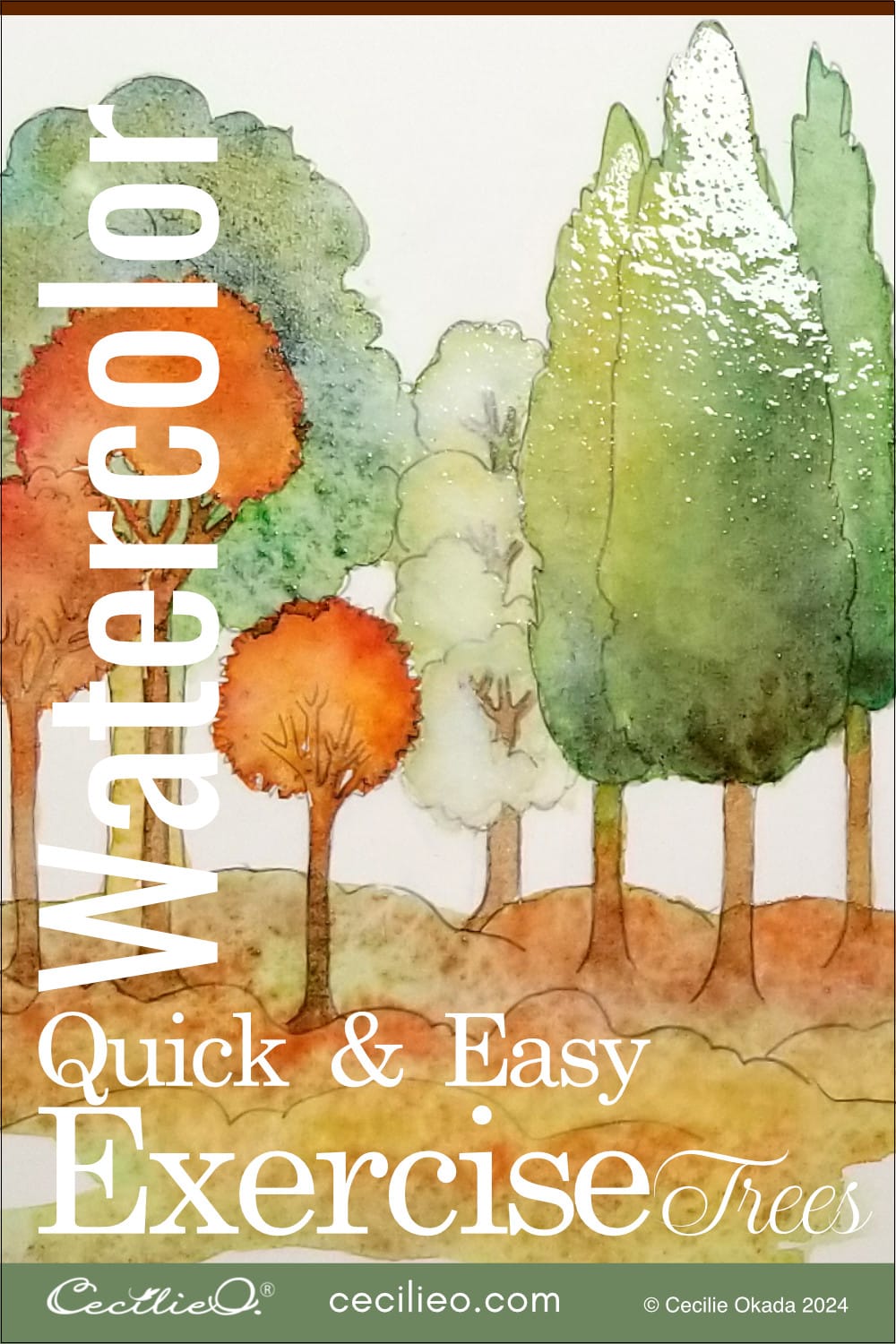
Transparent flower petals can be difficult to watercolor. All flowers have veins on the petals, but they are more or less distinct. If you’re anything like me, these veins are a source of struggle. But fear not- I have a simple solution.
The reference photo for this tutorial is from a trip to the botanical garden in Osaka here in Japan. I had no idea that I took such an interesting shot… The flower was too high up, so I had to hold my phone high. By doing that, I captured an image with stunning transparency. Perfect for a tutorial on translucent petals.

What’s more, the overlapping petals look like the Flower of Life. Magic at work! It’s a concept from Sacred Geometry. 19 overlapping and interconnected circles make up a beautiful symbol. It means the unity of creation, that everything is made from the same blueprint, the same source.

My solution to transparent flower petals with visible veins
What’s my solution to the transparent-petals-with-veins dilemma? White polychrome colored pencil. You can create transparent petals with watercolor by using a sponge to soak up paint. But instead of painting the veins with fine, subtle lines on top, you draw veins with the polychrome.
The polychrome is an oil pastel pencil. When you draw on top of dry watercolor, the white marks become clearly visible. Generally, white colored pencils leave a fainter mark.
The other day, I found a waterproof white polychrome at the local art supply store. It’s a Mitsubishi Polycolor. It looks like it’s only available in a full set of colors outside Japan. But the Faber-Castell white Polychrome is the same kind of pencil.
NOTE: I use a mix of colored pencils from various brands, including Faber-Castell polychrome for the other colors in my tutorials.
Whenever I see a new, interesting color in an art supply shop, I buy it. For the color, not the brand.

In previous tutorials, I’ve used the aquarellable polychrome. Here, I use a waterproof pencil. What matters, is that the white color “takes” on top of the watercolor base.
Follow my tutorial and be off to watercolor beautiful, translucent flower petals. With a bit of decorative flair.
Drawing the flower
I prefer to draw a loose sketch before making a clean outline for my watercolor painting. In that way, I can experiment until I get the drawing right. It’s not a good idea to use the eraser frequently on watercolor paper. Even though the watercolor paper is strong, the quality will diminish.

When I have finalized my sketch, I trace it to make a clean outline. Learn how to transfer an outline drawing onto watercolor paper.

The One Tree Art Club library has an extensive collection of free line art for tutorials on this blog. Download free PDFs here.
Step 1: Painting the foundation colors with watercolor
My watercolor set doesn’t have clear pink or magenta, so I have an extra tube of paint with this color. In the image below you can see how I mixed a more reddish pink, and the colors I used for the stem and leaves. The brown color is for the center of the flower.

Paint inside the outline of the flower head with plain water, then paint with the two pink colors. Abundant water allows the colors to flow freely. Use your brush to distribute. You need more pigments on the outer parts of the petals.

You can use a sponge or tissue paper to soak up paint.
Paint the stem and leaves green. Use a moderate amount of water on your brush to get an uneven distribution of greens.

When the flower head is dry, you can paint the five solid overlapping sections. Use water sparingly in this step. You want an even distribution of pink color.
Next, you paint the center of the flower brown.

Step 2: Colored pencils to enhance transparency and depth
The center of the flower has a yellow “halo”. Use pale yellow and ochre to draw this effect. Make the brown center more solid with a dark brown pencil.
On the petals, do the following:
- Draw two center lines down the middle of each petal with a dark pink pencil.
- With your white polychrome pencil, draw a line between the two pink lines. It creates the illusion of “embossing”
- With your white polychrome, draw curved lines from the center and outwards on each petal. Push lightly and draw very fine lines. Make sure your pencil is sharp.
- Add more white to the light areas on the petals. Use more force when you draw this.
- With a darker pink or purple pencil, outline the flower. Make sure the tip is sharp, and draw a fine line. The outline frames the flower but it is not an effect in itself.
- Add darker pink or purple here and there, taking cues from the photo. Do this with a very light touch, and sparingly. Done correctly, you don’t notice that another pencil was used. Instead, what you see is petals with subtle shades.

Step 3: Painting the odd spots on the petals with watercolor
Since you have used a waterproof white polychrome, you can paint the odd spots on top of what you’ve done so far.
Use a thicker brush. Mix pink color with a good amount of water on your palette. Pick up this color with your brush and dab onto the petals. Look at the flower photo and distribute it in a similar pattern.


While you’re waiting for the spots to dry, draw with green colored pencils to enhance the stem and leaves.

The spots dry up to look pretty much like the spots on the real flower. As if nature’s designer used a paintbrush too…I think the flower is an orchid, not sure. I was unable to find the species by using the Google image search. That’s why I call it The Flower of Life, named after its look-alike.

My best wishes to your creativity!






